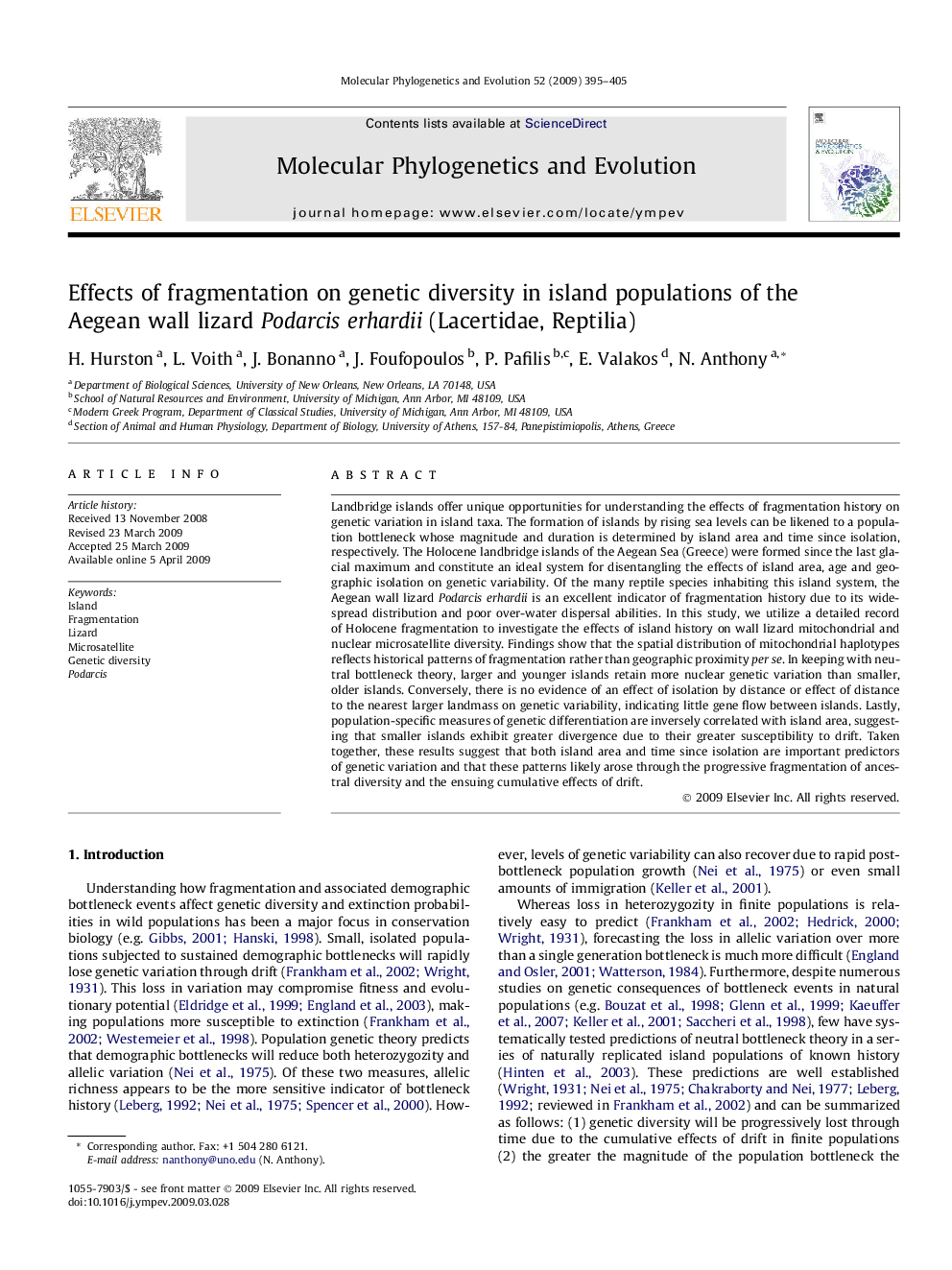| کد مقاله | کد نشریه | سال انتشار | مقاله انگلیسی | نسخه تمام متن |
|---|---|---|---|---|
| 2834398 | 1164311 | 2009 | 11 صفحه PDF | دانلود رایگان |

Landbridge islands offer unique opportunities for understanding the effects of fragmentation history on genetic variation in island taxa. The formation of islands by rising sea levels can be likened to a population bottleneck whose magnitude and duration is determined by island area and time since isolation, respectively. The Holocene landbridge islands of the Aegean Sea (Greece) were formed since the last glacial maximum and constitute an ideal system for disentangling the effects of island area, age and geographic isolation on genetic variability. Of the many reptile species inhabiting this island system, the Aegean wall lizard Podarcis erhardii is an excellent indicator of fragmentation history due to its widespread distribution and poor over-water dispersal abilities. In this study, we utilize a detailed record of Holocene fragmentation to investigate the effects of island history on wall lizard mitochondrial and nuclear microsatellite diversity. Findings show that the spatial distribution of mitochondrial haplotypes reflects historical patterns of fragmentation rather than geographic proximity per se. In keeping with neutral bottleneck theory, larger and younger islands retain more nuclear genetic variation than smaller, older islands. Conversely, there is no evidence of an effect of isolation by distance or effect of distance to the nearest larger landmass on genetic variability, indicating little gene flow between islands. Lastly, population-specific measures of genetic differentiation are inversely correlated with island area, suggesting that smaller islands exhibit greater divergence due to their greater susceptibility to drift. Taken together, these results suggest that both island area and time since isolation are important predictors of genetic variation and that these patterns likely arose through the progressive fragmentation of ancestral diversity and the ensuing cumulative effects of drift.
Journal: Molecular Phylogenetics and Evolution - Volume 52, Issue 2, August 2009, Pages 395–405